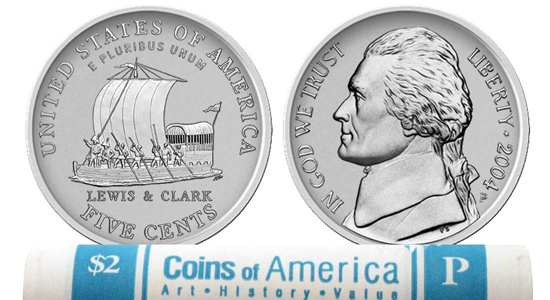We Are Scientists—the duo of vocalist/guitarist Keith Murray and bassist/vocalist Chris Cain—are known for the oblique humor and intelligence that they bring to their music, but a question about their sharp mental acuity produces gales of laughter. “I don’t believe brains or wit are particularly helpful, or necessary, in pop music,” Murray says, still chuckling. “If we intended our appeal to be narrow and excessively insular, those qualities might be good for us, but nobody likes a smartass.” Despite this protestation, the songs on the band’s new LP, TV En Français (Dine Alone), are brimming over with wry humor and skewed insights into the state of modern romance. TV En Français was recorded with the help of producer Chris Coady (Yeah Yeah Yeahs, TV On The Radio), who helped give the album a polished, expansive sound. Cain will be guest editing magnetmagazine.com all week. Read our brand new feature on the band.

Cain: This is another great fucking coin from U.S. Mint sculptor/engraver Al Maletsky, but a problematic one this time: Where, Maletsky, are all the animals? Maletsky, of course, brought us 1999′s Florida variation of the American Eagle Platinum Bullion Coin, which depicted a freedom-guzzling eagle in flight 50-80 feet above a stolid, no-nonsense alligator who’s teetering around in his butt-nasty primordial swamp. (Such is Maletsky’s mastery that whenever we handle a Florida AEPBC, we feel like we’re getting butt-nasty black muck all over our hands and for hours afterward we can smell sulphur and rot and other primordial fetors—gator shit and sulphur and the like.) High five to Maletsky, then, for the Florida AEPBC. Indeed, had a lesser sculptor/engraver forged the Keelboat nickel, we’d be nominating him or her for the Nobel Prize in coinsmithery. But it was Maletsky who did the forging, and him we hold to a higher standard than we do his peers. So we have to ask, “Where the hell are the animals?” Here we have gorgeous depictions of Noah and his wife and sons and daughters-in-law, and an almost monstrously evocative rear cabin area thingy, and damned if you can’t feel the wind heave against that swollen mainsail, and damned if the hull itself doesn’t totally look like wood—so where are the animals? Designing a coin scene is about condensation: choosing just the right half-dozen details with which to represent, on a stamp-sized palette, an entire era, career, or swamp. To tell the story of Noah’s Ark in an inch or less, you undoubtedly need to show a boat, and you undoubtedly need to put some people on it—and Maletsky did all that, yes—but surely it’s crucial to the plot that God instructed Noah to take two of each animal on the Ark so as to insulate his holy blueprint from the deluge. Those animals, the pair of each sort, are, along with the immeasurable waters themselves, the most easily identifiable aspect of the entire Noah myth. So what happened? Was Maletsky opining? Does he feel that the real meat of this well-known tale is found in the negotiation between man and god? That the animals are mere set pieces? If so, then we challenge his decision to ascend the soap box. It’s not the coinmaster’s place to interpret! His role is, again, to condense, to whittle away the extraneous; and to define “extraneous” by popular belief, by the multitudes who will wield the economic instrument coinmaster has adorned. Maletsky overstepped his bounds; he inflated and then burst his scope. Coinmaster! Resist the temptation to embroider! Withstand the black gravity of absolute power! Consider not your steroid-muscled ego and its el Niño-scale whims! Instead, defer to the likely preference of the vast citizenry whose pocket or coin-purse your creation will one day inhabit.






